One of L.A.’s most enduring landmarks, the historic Angel’s Flight, was a funicular railway that operated from 1901 until 1969 when the City dismantled the railway to clear the site for redevelopment.
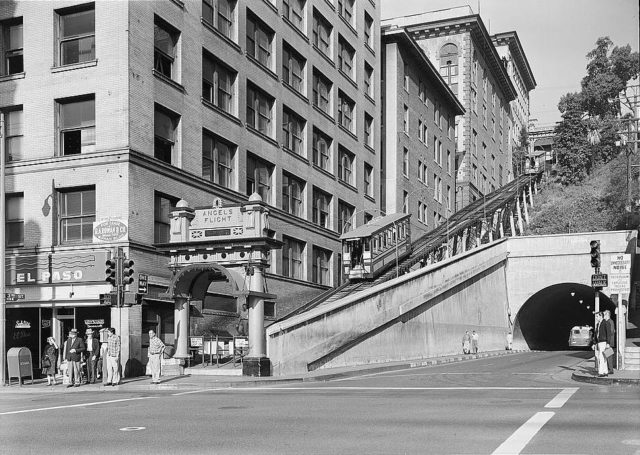
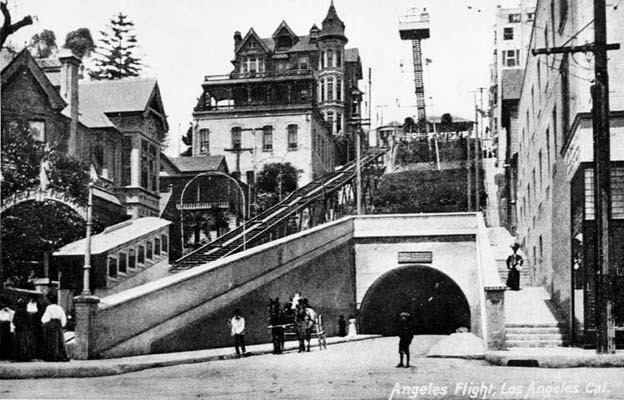
The funicular operated on two different sites, using the same cars and station elements. Col. James Ward Eddy, a lawyer and engineer, was the visionary who convinced City Hall to grant him a 30-year franchise to construct and operate an inclined railway.
The original Angel’s Flight location, with tracks connecting Hill Street and Olive Street, operated from 1901, carrying millions of people up and down the steep incline of Bunker Hill.
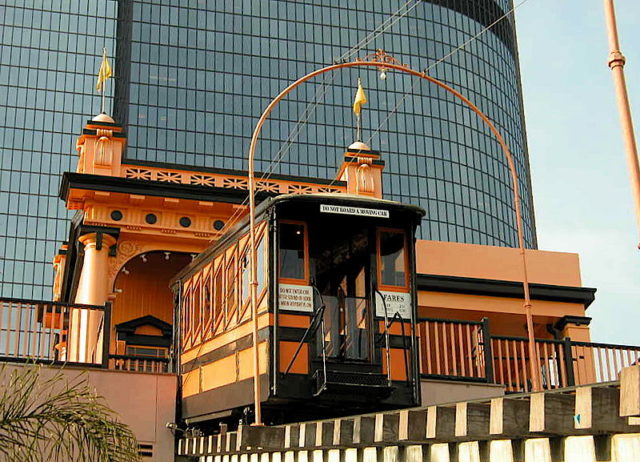
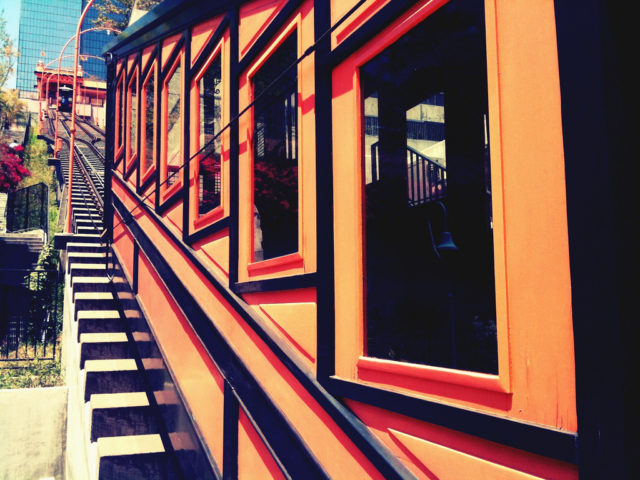
Angel’s Flight consisted of two vermilion “boarding stations” and two cars, named Sinai and Olivet, pulled up the steep incline by metal cables powered by engines at the upper Olive Street station. As one car ascended, the other descended, carried down by gravity.
The counterbalanced cars, controlled by cables, travel up 33 percent gradient for 315 feet. It is estimated that Angel’s Flight has carried more passengers per mile than any other railway in the world, over a hundred million in its first fifty years.
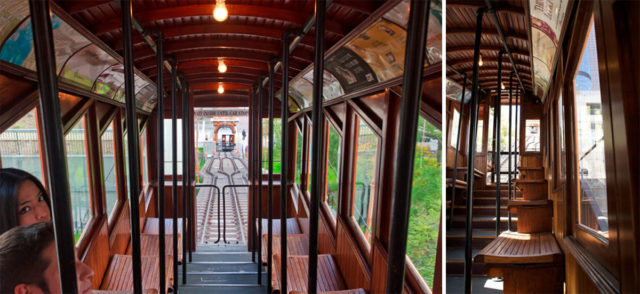
Over the years operations were transferred to other powers, tracks were relaid, and the station house redesigned. An archway labeled “Angel’s Flight” greeted passengers on the Hill Street entrance, and this name became the official name of the railway in 1912 when the Funding Company of California purchased the line from its founders.
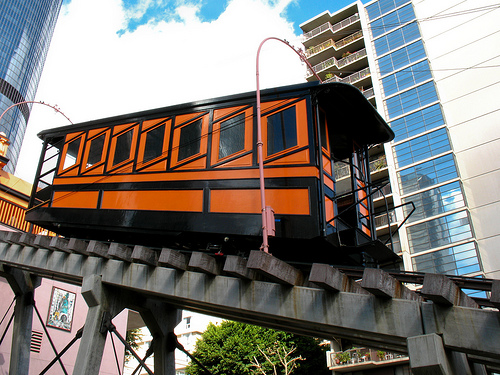
As the surrounding area faced rapid commercialization, the original railway was forced to close, and the orange trolley cars were kept in storage for twenty-seven years.
Although it took another six years and a good supply of bureaucratic activity, the second Angel’s Flight location opened on February 24, 1996, half a block south of the original site, with tracks connecting Hill Street and California Plaza.
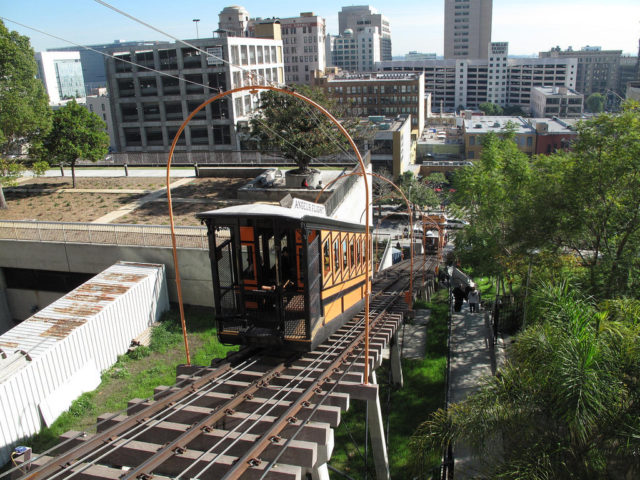
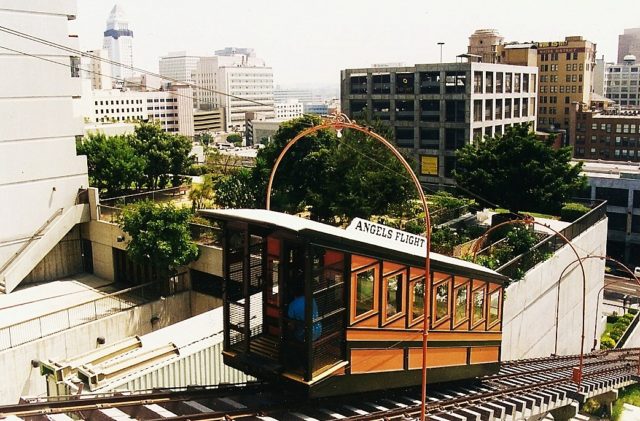
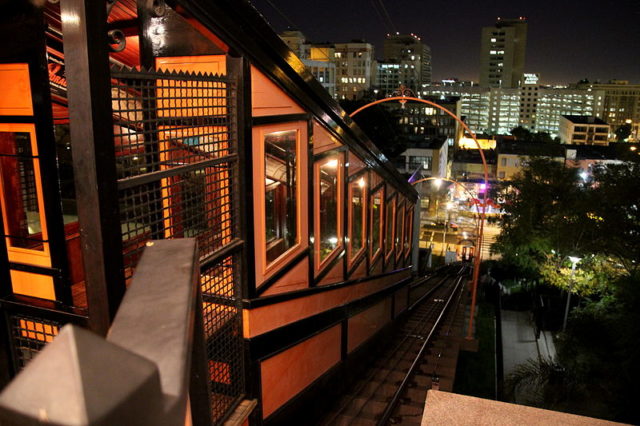
Following an accident in 2001, when a serious accident killed one passenger and seriously injured a few others, the Foundation commissioned the design and installation of an entirely new drive and control system, and Angel’s Flight reopened to the public on March 15, 2010.
Service was suspended again in September 2013, and the funicular has yet to reopen. The counterbalanced cars have been repaired and restored to their original state.
